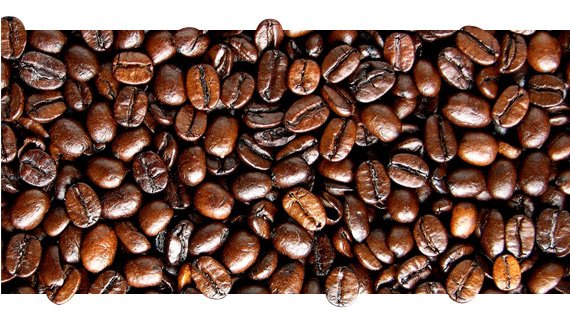Life is full of questions. I often ask myself: Can an organic form of selenium decrease estrogen? If a little caffeine improves performance, is more caffeine better? Does Kevlar-infused athletic tape perform better than traditional tape? Do you enjoy a better sex life if you exercise regularly?!
Unanswered questions can drive a man mad. Fortunately, research labs are full of answers.
Focus your eyes and attention to the front of the class: it's time again for the research world to teach another lesson.
Hormone Balancing Act
J Endocrinol. 2011 Nov 29. [Epub ahead of print]
Aromatization is the conversion of masculine hormones (androgens) to feminine hormones (estrogens) via the aromatase enzyme, which is a protein that's up-regulated as body fat increases. Often, as your waistline expands, your manly hormones undergo "gender reassignment." You experience a decrease in testosterone-to-estrogen ratio. Even worse, if your testosterone levels start increasing, aromatization also speeds up in a cruel attempt to keep the man down. Therefore, if you want to effectively increase naturally-occurring anabolic androgens circulating through your body, it's wise to have a plan for reducing or inhibiting aromatization.
A recent study out of Tulane University School of Medicine reported that an organic selenium compound, methylseleninic acid, was able to suppress aromatase enzyme synthesis in a dose-dependent fashion in cell cultures. Specifically, a low dose of the selenium compound reduced aromatase synthesis by almost 60%; a high dose completely inhibited the enzyme from being produced. This data would suggest that methylseleninic acid could improve testosterone-to-estrogen balances, but to date this hasn't been explored in human studies.
Keep your eyes on the research! Though the current study was conducted within a cell culture model, it's virtually inevitable that methylseleninic acid will become available to the sports nutrition world as a marketed anti-estrogen compound. It's worth noting that another study has shown that methylseleninic acid may decrease skeletal muscle cell insulin sensitivity, so don't jump to any conclusions before more data is made available.
Breathe A Sigh Of Relief
Am J Gastroenterol. 2011 Dec 6. [Epub ahead of print]
If you suffer from GERD (gastroesophageal reflux disease), then you're probably all too familiar with the bad breath, heartburn, regurgitation, coughing, sore throat, and host of other lovely symptoms that may plague you daily. However, something you do every moment of your life may offer significant relief — breathing!

Researchers out of Graz, Austria, discovered that when patients with non-erosive GERD or healed esophagitis performed regular diaphragmatic breathing exercises, oral cavity acidity, quality of life, and dependence upon prescription medication improved significantly after just 4 weeks. "Diaphragmatic breathing is a technique whereby you deliberately fill your stomach with air as you breathe in through your nose. You hold on to the breath for several seconds and then exhale through your mouth."
If you suffer from acid reflux or the disorder has advanced to GERD, understand that stress - emotional, mental or physiological - only makes the problem worse. Thus, stress management is one way to tackle the symptoms of GERD. Diaphragmatic breathing is one such stress-reducing technique that also happens to strengthen the muscles surrounding the lower esophageal sphincter, which is the "control valve" responsible for gastric content leakage back into the esophagus.
Breathe deeply! To perform diaphragmatic breathing, take deep, full, slow breaths in through your nose, filling your lungs and expanding your stomach with air; hold your breath for a couple of seconds, and then exhale through your mouth. Repeat regularly, especially after a meal or when stressed.
A Tale of the Tape
J Orthop Sports Phys Ther. 2011;41(12):961-8.
What many athletes may gain in stability by wrapping-up with traditional athletic tape, they often lose in athletic performance. The restriction in ankle mobility can also increase the rate of knee injuries. However, a new silicon- and Kevlar-infused hyper-elastic material appears to be a serious game-changer in the world of athletic training technology. In a head-to-head comparison of traditional athletic tape versus the new hyper-elastic material, it was shown that the new composite tape provides significantly better ankle support during exercise and maintains its elastic properties over a significantly greater range of tensile load.

The composite tape provided athletes lower initial stiffness and greater support at the end of a 30-minute exercise bout. Using a device to test material strength, it was shown that the composite tape was almost 94% less stiff at rest, provided 68% greater support after prolonged exercise, required an 88% greater load to failure, and stretched to almost 35% of its initial length before failing to provide support (+256.5% greater than traditional tape).
Unequal Technologies Company (https://unequal.com/) is the patent-holder of the new athletic tape; however, Unequal has licensed the production rights of their new tape to Cramer Products, Inc. Visit Cramer (https://www.cramersportsmed.com/) if you're looking to purchase the tape.
Exercising Young Guns Have Better Sex
J Sex Med. 2011 Dec 6. [Epub ahead of print]
A wealth of research has focused on the benefits of exercise on the sex lives of older adults, but researchers at the Men's Health Center at Emory University in Atlanta, Georgia, sought to evaluate if more exercise affected erectile function in a younger crowd: 18-to-40-year olds.
Though sexual desire was an average of almost 10% greater for sedentary versus active men, those described as sedentary (expending less than 1400 kcals per week by physical activity) reported almost 23% greater erectile dysfunction, a 26% reduction in orgasm function, 24% decrease in intercourse satisfaction, and almost 30% less overall satisfaction in their sex lives.
Get active! According to this research, burning just an extra 500 calories, three days per week would classify you as "active" and would therefore give a little more life to your libido. Get after it!
More Caffeine Isn't Always Better
J Sports Sci. 2011 Dec 6. [Epub ahead of print]
Caffeine has become about as ubiquitous in sports nutrition as water and, like water, there exists a point of diminishing returns. For example, when competitive cyclists were provided 1.36 or 2.73 mg of caffeine per pound of bodyweight 90 minutes prior to a 60-minute cycling trial, the "more is better" mentality of modern sports nutrition proved less effective.
Both doses significantly improved the amount of total work performed versus placebo, but the lower dose provided a higher average increase in performance: 4.2% greater than placebo and 2.9% greater than more caffeine.
Consume around 1.3 mg of caffeine per pound of bodyweight 90 minutes before exercise. Any more than that dose may be a waste. (Note that the caffeine-sensitive may want to start with a lower dose and work up to the recommended 1.3 mg per pound.)

Ah, Adenosine!
Am J Physiol Regul Integr Comp Physiol. 2011 Nov 30. [Epub ahead of print]
The mushroom Cordyceps sinensis and the dietary supplement form of ATP (adenosine triphosphate) have something in common: they both seem to affect exercise performance by increasing extracellular adenosine concentrations. More specifically, as exercise intensity increases and oxygen availability is compromised, adenosine appears to act as an external signaling molecule that can increase blood flow, thereby promoting the uptake of nutrients and removal of metabolic byproducts.
When adenosine was infused into the femoral artery of healthy young men at rest and while performing a 1-legged knee extension under hypoxic conditions (comparable to ~3400 m of altitude), it was shown that glucose uptake into skeletal muscle increased significantly. Glucose uptake increased 10-fold under resting conditions and, during exercise, was 195% greater under hypoxia than under normal oxygen conditions.
To improve blood flow and recovery, consume 400-800mg of ATP per day or 1.5-3.0g of Cordyceps sinesis Mycelium extract [standardized to ? 0.14% adenosine (Cordycepin) on an empty stomach, with water, 60 minutes before exercise or immediately after.
Oh, Baby!
Med Sci Sports Exerc. 2011 Dec 2. [Epub ahead of print]
Nutrition and other lifestyle factors notwithstanding, there's little debate that women who exercise regularly prior to and during pregnancy have an easier birthing experience and healthier offspring. Women who exercise also recover faster post-partum.
Data from 61,098 pregnancies revealed that women who exercised 3-5 days per week, versus an average of just one day per week, experienced significantly higher gestational periods and reduced pre-term
births (<37 weeks completed). In fact,
women who exercised 3-5 days per week
were 0.74-0.82 times less likely to deliver
pre-term and 1.15 times more likely to deliver
post-term (?42 weeks).
You'll be happy to know that the type of exercise
performed during pregnancy appeared to have no
bearing on the results observed within the
aforementioned study. Thus, assuming a good nutrition
and supplement plan, and an overall healthy lifestyle, exercise an average of 3-5 days per week during pregnancy to reduce the chances of delivering pre-term.
BCAAs Work, Even When You Don't
Eur J Appl Physiol. 2011 Aug;111(8):1815-28.
An injury to an athlete or bodybuilder is analagous to falling off a cliff - it isn't the fall that hurts, it's the landing! Be it an injury or simply taking time away from the gym, physical inactivity unloads your muscles and leads to atrophy. But, according to this study, BCAA supplementation may help preserve muscle.
Rats that were completely sedentary for six days showed significant muscle loss, decreases in signaling proteins responsible for muscle growth, and an increase in signaling proteins that break muscle down. However, when the rats' food was supplemented with BCAAs, the loss of muscle protein and RNA was reduced. The rise in signaling proteins that reduce muscle was also reduced. BCAA supplementation also helped to partially preserve mTOR and some of the other protein synthesis regulating pathways.
Supplementing with upwards of 20g of BCAAs per day may reduce the negative impact that inactivity would otherwise cause on your muscle mass. Consume in divided doses throughout the day.



